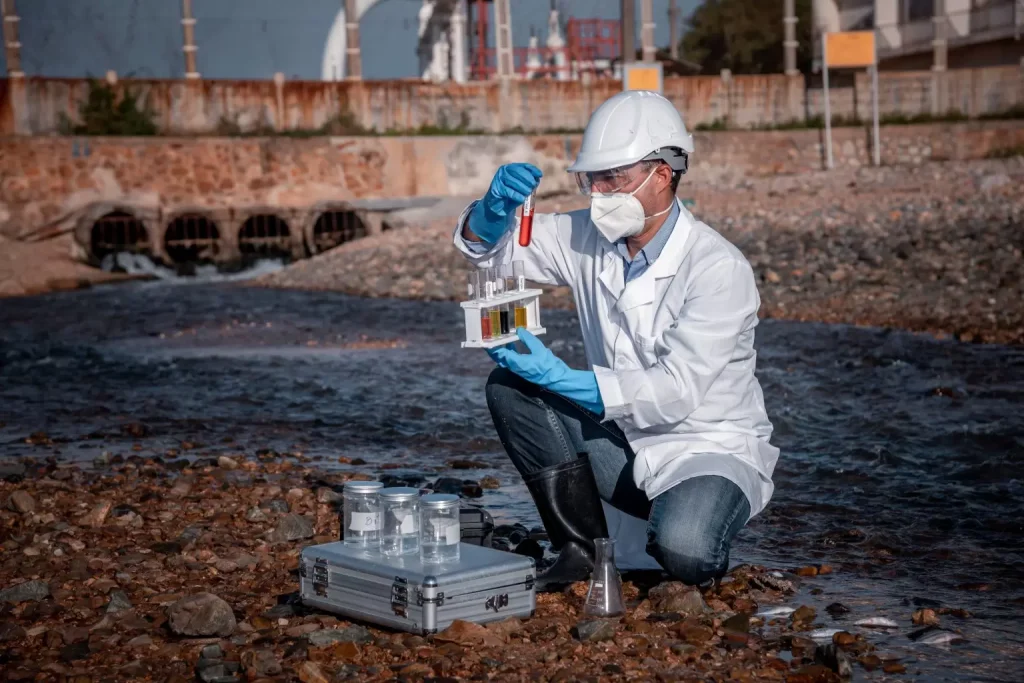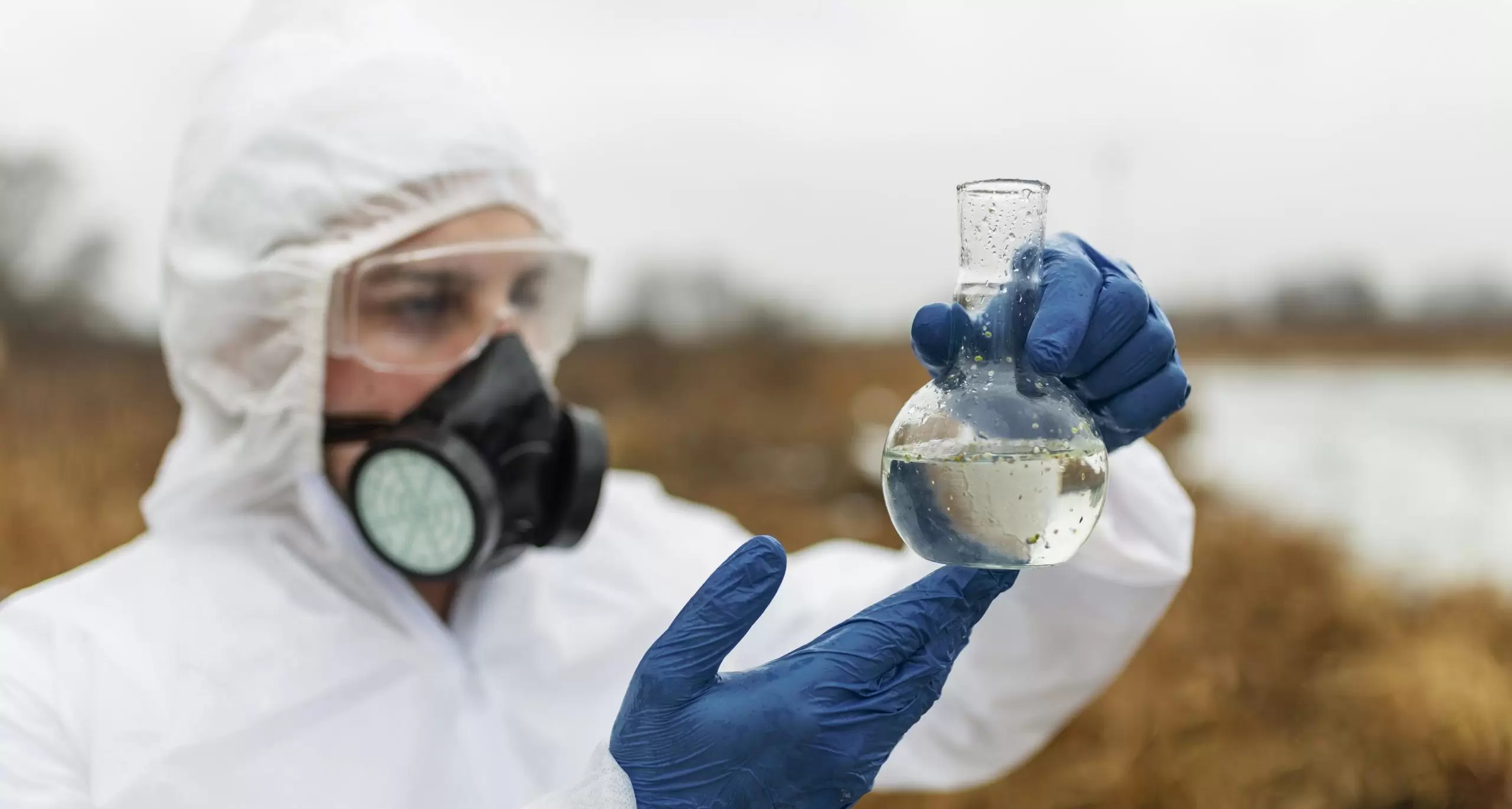Per and poly-fluoroalkyl substances (PFAS), which have been used in many areas since the 1940s and stand out with their properties such as oil & water repellency and thermal resistance, are chemicals that cannot be easily broken down and accumulate in soil, water, human and animal bodies.
The study, led by the University of Oxford, showed that 26 of these toxic chemicals reached even the Norwegian Arctic ice. This means that these man-made chemicals, also called “forever chemicals,” are spread throughout the ecosystem and can be found even in the body of a polar bear.
Awareness of PFAS is increasing day by day, and countries and businesses are taking action to reduce or even completely end the use of PFAS. One example is the submission of a restriction proposal for around 10,000 per- and polyfluoroalkyl substances prepared by authorities in Denmark, Germany, the Netherlands, Norway, and Sweden to the European Chemicals Agency (ECHA) on 7 February 2023. The proposal aims to reduce PFAS emissions and make products and processes safer for people. All PFAS covered by the proposal are highly persistent in the environment. If their emissions are not minimized, humans, plants, and animals will be increasingly exposed, reaching levels that will have adverse effects on human health and the environment without any restrictions. If action is not taken, about 4.4 million tons of PFAS will end up in the environment over the next 30 years.

What is the Definition of PFAS and How Many are There?
According to the definition made by The Organization for Economic Co-operation and Development (OECD) in 2021 “PFAS are defined as fluorinated substances that contain at least one fully fluorinated methyl or methylene carbon atom (without any H/Cl/Br/I atom attached to it), i.e., with a few noted exceptions, any chemical with at least a perfluorinated methyl group (– CF3) or a perfluorinated methylene group (–CF2–) is a PFAS.”
According to a chemical database of the U.S. Environmental Protection Agency (EPA), there are nearly 15,000 PFAS.
Two of the most known chemicals in the PFAS group are Perfluorooctanoic Acid (PFOA) and Perfluoro octane Sulfonate (PFOS).
What are the Health Hazards of PFAS?
PFAS are persistent chemicals that accumulate in humans, animals, and the environment or are degraded to them.
Scientific studies have revealed the link of some PFAS with certain health problems;
- Increased cholesterol levels
- Decreased vaccine response in children
- Changes in liver enzymes
- Increased risk of high blood pressure or preeclampsia in pregnant women
- Lower birth weight
- Increased risk of kidney or testicular cancer

Where PFAS Found? How can I be exposed to PFAS?
PFAS are used in the production of many products we use in daily life. For example;
- Food packaging
- Cleaning products
- Non-stick kitchen products
- Fire extinguishers
- Hydrophobic, oleophobic, stain-resistant textiles
- Personal care products such as shampoo and makeup
Use of these products or the following conditions will lead to your exposure to PFAS.
- Drinking water from a water source contaminated with PFAS or eating a sea creature that has grown in that water.
- Be employed in enterprises that use or produce PFAS
- Consuming plant or animal foods grown on soils in regions where PFAS are used/produced/processed

Conclusions
Although PFAS is extremely widely used due to its negative effects on the environment, humans, and animals, manufacturers are looking for PFAS-free alternatives, and sustainable, green chemicals.
With nanotechnology applications, PFAS-free, Eco-Friendly alternative solutions can be developed.
As Artekya Technology, we attach importance to the fact that our nano coatings are REACH compliant and friendly to the environment, and human and animal health, develop and manufacture functional coatings for the surfaces listed below:
- Thermosets and thermoplastic surfaces
- Glass
- Ceramic
- Mineral absorbent surfaces like concrete and natural stones
- Metals and alloys
- Composite materials
- Painted surfaces
- Wood and wood-based surfaces
- Textiles
- Genuine and artificial leather, suede, and nubuck surfaces
Each one of Nasiol Nano Coatings has unique value propositions but the most common benefits of our PFAS-free coatings are listed below:
- Anti-corrosion
- Hydrophobicity
- Oleophobicity
- Scratch resistance
- Easy to clean
- Anti-graffiti
- Anti-mold
- Stain resistance
- UV protection
- Chemical protection
- Anti-microbial and anti-viral
- Renovation
In addition, with our long years of experience in the sector, we keep developing new products according to the demands of our customers and expand our product range day by day.
